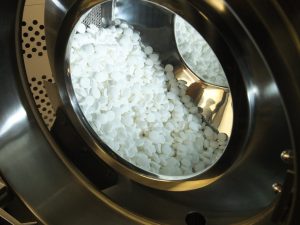News
12th May 2020 - A Tablet Development Journey at Upperton
With the continued expansion of our tablet formulation development services, Upperton currently have a number of tablet dosage form development projects completed or in progress. Theses tablet / solid dosage form projects have encompassed a wide range of development activities from Active Pharmaceutical Ingredient (API) characterisation and feasibility studies through the application of enabling technologies, formulation and process development, and the clinical manufacture of phases I and II supplies.
Examples of typical tablet formulation development services milestones are:

- Initial data assessment which may include collaboration with the API supplier and / or early DMPK modelling expertise.
- Material mechanical characterisation and excipient compatibility studies.
- Bioavailability enhancement studies and selection of formulation development strategy including DMPK evaluations.
- Formulation development of a phase appropriate dosage form that meets the target product profile.
- Manufacturing process optimisation and initial scale-up.
- Manufacture of placebo and active dosage forms for Clinical Supplies.
This article will cover the key equipment and techniques used throughout these different stages of Upperton’s tablet formulation development services.
Preclinical Assessments
The first fundamental requirement to successful tablet formulation development services, is to understand as fully as possible the compound and materials you are using in particular the API.
Therefore, the formulation development journey always starts with a review of the available physicochemical and biological data, a consideration of the target product profile and the client objectives.
Where possible, spend time at this stage working with the API supplier and / or specialist providers such as XenoGesis. Applying computer modelling and in vitro pharmacology assessments provide many benefits including: selection of the best drug form (e.g. identification of the optimum salt or polymorph), prediction of human pharmacokinetics (e.g. adsorption and exposure) and will provide direction for dosage form design and development; to ultimately deliver a more rapid drug development program. Application of these modelling and in vitro studies are also applicable through the product development lifecycle assisting with the design and evaluation of pre-clinical and clinical studies to improve the probability of clinical success.
A data review will point towards either a conventional development pathway going directly to dosage form development or will identify the need for the application of an enabling technology, for example the solubility of the compound to enhance to oral bioavailability.
Enabling Technologies
If the data generated in the preclinical studies (or even in previous clinical studies) point towards the need to improve the bioavailability of the compound, by increasing its solubility and / or permeability, then Upperton can explore a number of enabling formulation strategies using their UpperSolv™ protocol.
Depending on the mechanism for the poor solubility a simple strategy of particle size reduction may be all that is required but if this is not the case then we can explore a range of enabling technologies and strategies including: lipid based formulations, amorphous formation by comilling and the preparation of amorphous solid dispersions by spray drying. With a relatively small amount of material (e.g. 5 grams) a range of approaches can be investigated in parallel. Applying the UpperSolv™ approach, Upperton can prepare a range of enabling formulations and perform in vitro testing. Working with partners such as XenoGesis, these formulations then undergo a comparative small animal PK study and evaluation. This approach, which can be completed in as little as six weeks, provides a wealth of data to assist with decision making and optimised selection of the best formulation strategy to use for improved chances of clinical success.
All of the enabling technologies evaluated will be scalable at Upperton for the manufacture of clinical supplies.
Material Characterisation
Once the API (usually in very short supply) is available to Upperton, the tablet product development can begin with or without the application of any enabling technology.
In general, the API or enabled intermediate will have insufficient inherent mechanical properties to form a robust tablet compact without the addition of appropriate excipients and processing techniques to aid tablet formation.
These excipients will be chosen based on their documented material functions in order to impart specific properties (e.g. compressibility or disintegration) but the enabled drug substance or API is likely to be largely uncharacterised in terms of its mechanical behaviour.
It is important to recognise there is always the potential that future batches of the API may behave differently as the API manufacturing process is scaled-up, but establishing an initial baseline of mechanical behaviour is important so that any changes can be tracked and their potential to influence the final product evaluated.
Studies to be conducted include establishing the compressibility and mechanical nature of the material. For example: is it ductile or brittle? Does it display elastic behaviour? Is it sensitive to speed of compression? These studies are conducted on both the API / enabled intermediate and a small number of prototype “standard” formulations by application of techniques and equipment; such as the Natoli NP-RD10 single station tablet press at Upperton’s R&D facilities and with specialist outsourced collaborators such as Merlin Powder Characterisation Ltd.
Once you’ve begun to understand the mechanical characteristics of your molecule, you can also begin to determine specific excipients that are likely to be required for your formulation. Excipient compatibility studies are designed and performed where the drug substance and excipients are stored, testing a range of stressed conditions. This data can be extremely useful in early identification of the most suitable excipients and reduces risk of instability due to drug substance – excipient interactions becoming an issue later in the project after significant work has already been conducted.
Analytical Method Development
In parallel to the above-mentioned stages analytical methods must be transferred, established and developed. Typically, an initial method will be available from the API supplier. This will need to be transferred onto Upperton analytical equipment and developed to meet the drug product requirements. Key tests are assays on impurities / related substances. Establishing suitable testing parameters is critical to ensure that they are stability indicating, efficient, have suitable scope to be extended and validated for the drug product release / stability testing.
As the project develops, additional analytical methods and techniques (e.g. HPLC, GC, UV, Karl Fisher) must be developed for a range of tests; depending on the drug product specifications including dissolution, moisture, residual solvent levels and dose uniformity etc. Close cross functional collaboration between the analytical and formulation teams is imperative to ensure an efficient development program is delivered.
Formulation Development
The focus here is on turning the active material into a final tablet dosage form that delivers the drug substance to the patient in a controlled dose with defined release characteristics that can be manufactured reproducibly to the scale required. It is not unusual to be constrained by factors including drug substance availability and client commercial milestone objectives. It can therefore mean that for the initial clinical studies on a relatively small-scale may have limited process development conducted, with dose adjustments made at short notice, clinical demand changing dramatically or even a change from tablets to a simple drug in capsule for the initial studies; with a view to delay optimised tablet development until after. Initial formulation developments need to be conducted in very close collaboration with the client and project managements teams, the entire development team must be flexible, collaborative and adaptable in their approach.
The formulation of the final tablet dosage form will be directed by the choice of excipients and tablet type which are dependent on the patient profile, drug loading and practical manufacturing process required. Initial evaluation of the factors (including drug loading on the mechanical behaviour, excipient compatibility results and dose requirements) will assist in determining the most appropriate process for tablet manufacture. Direct compression, wet granulation or dry granulation are all approaches that can be supported at Upperton using the Freund Vector TFC-LAB Micro Roll Compactor and GP1 High Shear mixer granulator. Upperton also has access to large-scale roller compaction equipment.
Developing the process and establishing controls on critical process parameters to optimise unit operations (e.g. blending, granulation, particle size reduction and lubrication) are critical.
Once sufficient API is available a limited number of prototype formulations will be manufactured and evaluated. Powder flow is often one of the most crucial attributes to optimise at this stage to ensure dose uniformity. At Upperton the Freeman Technology FT4 powder rheometer is used to support more empirical studies such a bulk and tapped density measurements. A lead formulation (and potential back-up) will be chosen and the compression process transferred onto an instrumented rotary tablet press. The mechanical forces of compression on a rotary tablet press are significantly different to those of a single punch machine and material properties such a flowability are more critically challenged. At Upperton we use the KG Pharma Futorque X-1 tablet press which can be formatted to manufacture tablets with a small number of punches to conserve limited material whilst still simulating the process challenges of a high-speed rotary machine.
In most cases, tablets will be coated following compression. Coatings are applied for a range of reasons including: to control release, mask taste, improve stability, ensure a uniform colour on tablet surface and aid swallowing. It is important that tablets are prepared for coating with a suitable dedusting process. Coating materials and coating process parameters are carefully selected to ensure they do not detrimentally affect the tablet properties. The O Hara Labcoater equipment used at Upperton is a versatile pan coater with a range of interchangeable pans suitable for coating batch sizes from 200 g to 5 Kg.
Manufacturing Process Optimisation and Scale-up
As more API becomes available, larger batch sizes (longer production runs) can be tested to address any issues associated with scale and increased production speeds. The effects of processing variables, excipient suppliers, changes in material attributes and manufacturing conditions can be evaluated; although, generally the main focus initially for many projects is to generate the first in human clinical and stability supplies as soon as possible. Detailed evaluations are performed subsequently, when sufficient API is available and initial clinical data is reviewed.
Where possible, it is good practice to manufacture a formal technical batch at an appropriate scale using the defined processing equipment and parameters. This gives confidence in the process and provides useful material for stability and shelf life studies.
Once the initial clinical batch(es) have been manufactured more focused attention can be applied to optimisation of the formulation (if required) and the process.
Detailed design of experiments will be used to gain a better understanding of the critical process parameters for each of the unit operations (e.g. granulation, milling, blending) and material attributes that may impact on the performance of the final product.
The versatile Futorque tablet machine can be utilized in its R&D setup with a single tablet station or fully equipped in its production setup with hopper, feeder systems and a complete set of tablet tooling capable of producing 120,000 tablets per hour to provide the longer tableting runs in which material load, friction and heat may play a role; generating data for the process scientist to identify any material and tablet quality issues. Only at this stage are potential problems such as sticking to the punch surface, tablet hardness, capping and weight variation often detected.
With regard to film coating optimisation, the design and operation of the Labcoater is such that up scaling to larger production coaters is a built-in design feature.
Now your formulation and manufacturing process is ready to be taken into the GMP clean-room for clinical trials manufacture.

